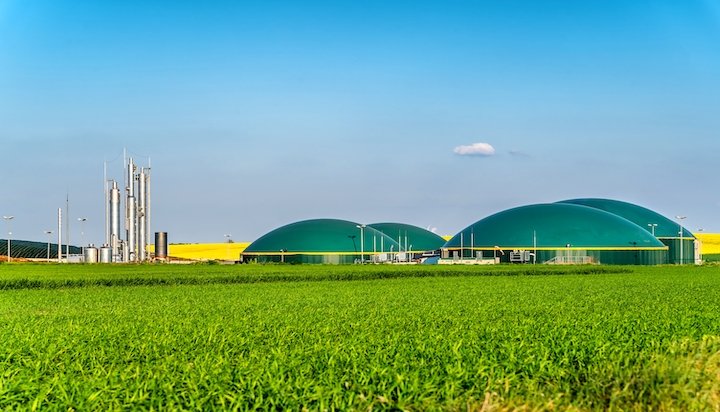Can biomethane offer a homegrown solution for decarbonising gas?
By Orlando Minervino, Decarbonisation Strategy Manager at Xoserve
The UK’s ambition to deliver a clean energy future and reduce our reliance on fossil fuels for heat and power is becoming ever more pressing. The last few years have shown how difficult managing the competing demands of energy security, sustainability and affordability can be. Alongside high energy prices, we’ve seen grid constraints delaying renewable generation and a lower-than-expected uptake of low-carbon heat pumps.
How the UK decarbonises its energy mix is arguably one of the most difficult questions for current and future governments. But could the answer to achieving net zero targets lie in low-carbon gas?
Reducing carbon content in the gas network
Biomethane is a renewable gas produced through anaerobic digestion using organic matter such as manure, food waste or sewage. It is a rapidly growing energy source, with over 700 biomethane plants in Britain alone, a figure which has doubled in the last decade.
[Total number of AD plants, based on data from Anaerobic Digestion & Bioresources Association]
With a similar profile to natural gas, low-carbon gas could be used within the current network for the same purposes (such as cooking or heating) while also lowering emissions. This would remove the need for costly upgrades to the existing infrastructure.
Data from the Anaerobic Digestion & Bioresources Association (ABDA) shows the UK currently has 141 injection plants, a number that is expected to grow in the coming years. Biomethane can also be stored easily and provides a more consistent output compared to renewable sources like solar and wind power. This predictability helps to balance energy supply and demand effectively.
Building blocks of a biomethane market
Realising biomethane's full potential requires clear and consistent policy frameworks that support investment and growth. The policies surrounding biomethane present a mixed picture of progress and gaps. While there have been many positive developments, further clarity and more strategic direction are needed.
There are currently two government support schemes for biomethane: the Green Gas Support Scheme (GGSS) and the Green Gas Levy (GGL). The GGSS is a government scheme that incentivises biomethane producers by paying them for every unit they inject into the network. The GGL supports the GGSS by placing obligations on gas suppliers to fund the scheme, including quarterly levy payments.
In 2023, the GGSS was extended to March 2028. This is a significant win for the industry as it encourages production by making biomethane a more financially viable proposition. With this tariff-based support offsetting the high initial investment costs associated with anaerobic digestion plants and biogas upgrading, biomethane becomes a competitive fuel to produce.
By 2050, it is estimated that the UK’s annual power generation will reach 692 TWh[1]. The Government's Biomass Strategy indicates that biomethane could contribute to 5% of this total, with approximately 30 to 40 TWh being produced per year. However, this figure may be too modest, with up to three times more biomethane production being achievable.
A national biomethane strategy and roadmap could provide a long-term plan for producers, investors and developers, making clear how the fuel should be used across different sectors in the years to come. It could also establish clear production targets and outline grid integration plans.
Equally important is streamlining planning and permitting processes for anaerobic digestion plants and biomethane upgrading facilities, enabling faster project development across Great Britain. This challenge is not unique to biomethane but applies broadly to all renewable energy technologies.
Drawing on a resourceful pathway
Although there are still policy uncertainties, biomethane will have a future in the UK's energy system, and the industry is showing considerable opportunity and promise.
Up against the UK's ambitious emissions targets, biomethane stands out as a key energy source that can no longer be overlooked. Currently, the two main challenges for biomethane are feedstock availability and NTS capacity (the space within the pipes).
A comprehensive biomethane strategy is essential for the growth of this energy source. One that includes ambitious production targets to boost feedstock, plans for seamless integration into the gas grid, and the establishment of a robust market through mechanisms such as gas-blending mandates and streamlined planning processes.
On its own, biomethane cannot replace present levels of natural gas in future energy scenarios. But, there is a strong business case for considering this low-carbon gas alongside other renewable energy sources as part of a wholesale approach to decarbonisation. As the deadline to reach net zero approaches, we need to make the most of all available resources to promote sustainable development.


